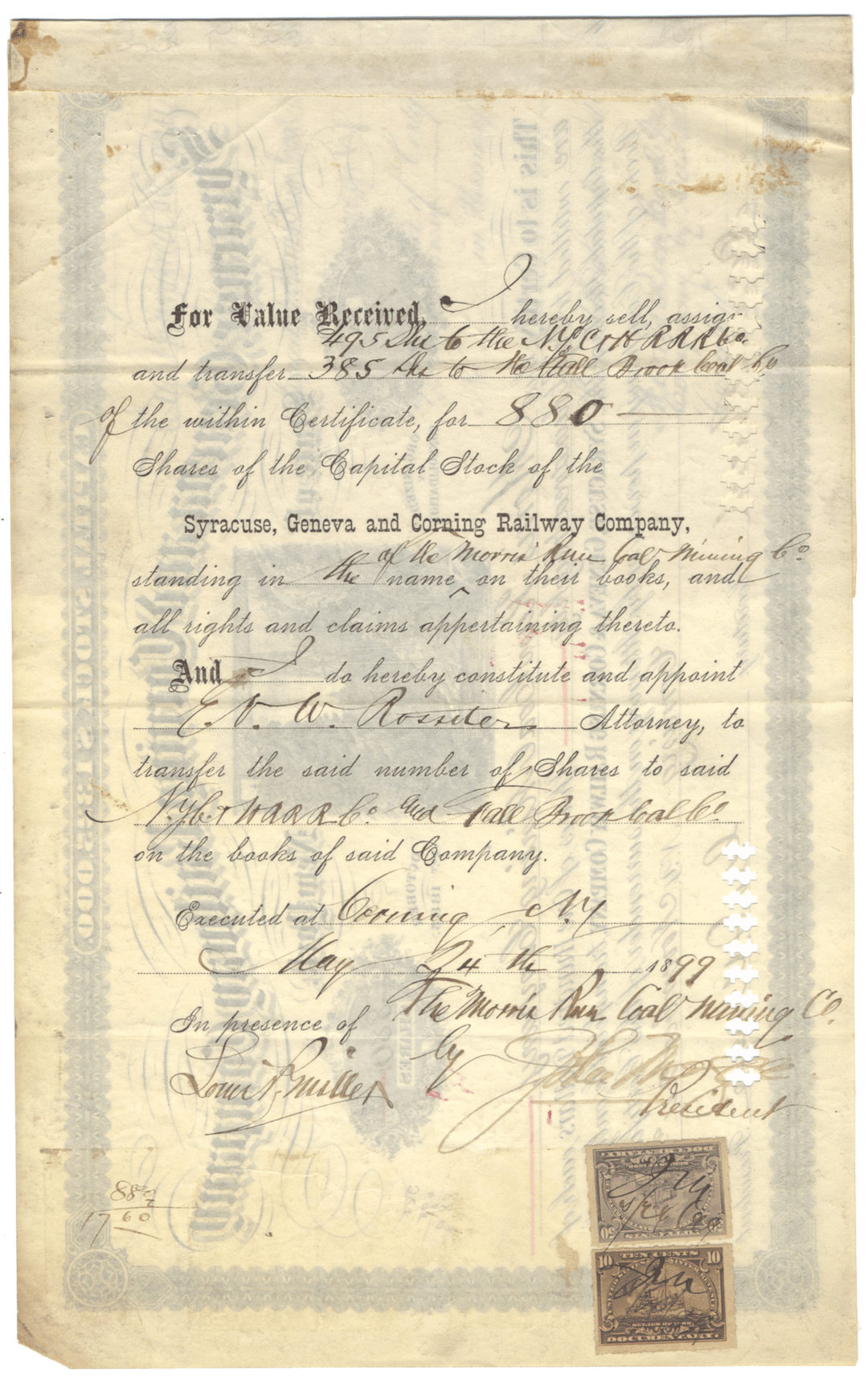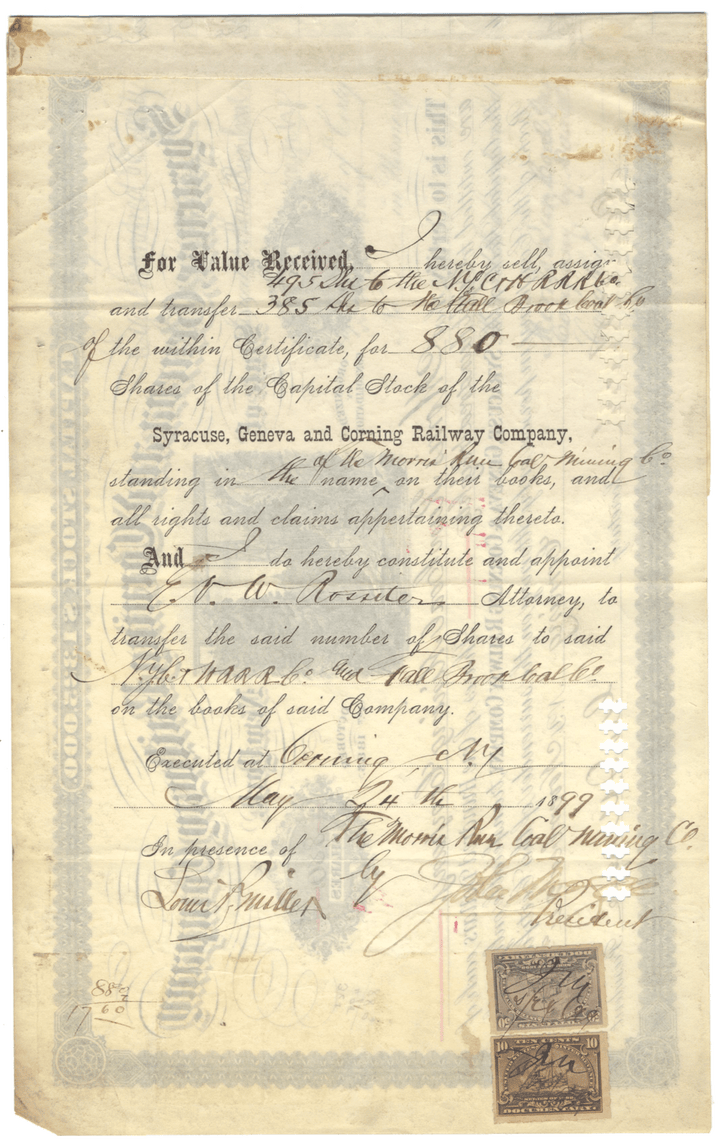Syracuse, Geneva and Corning Railway Company
- Only 1 available!!
- Backordered, shipping soon
- Guaranteed authentic document
- Orders over $35 ship FREE to U. S. addresses
Product Details
Company
Syracuse, Geneva and Corning Railway Company
Certificate Type
Capital Stock
Date Issued
November 24, 1885
Canceled
No
Printer
Maverick & Wissinger
Signatures
Hand signed
Approximate Size
11" (w) by 6 3/4" (h)
Images
Show the exact certificate you will receive
Guaranteed Authentic
Yes
Additional Details
NA
Historical Context
The Syracuse, Geneva and Corning Railway Company was chartered on August 27, 1875, and opened for business on December 10, 1877. It was leased to and operated by the Fall Brook Coal Company at a rental rate of 88.5 percent of its gross receipts for a period of 20 years.
Philadelphia to Buffalo Interchange
On February 4, 1882, the Syracuse, Geneva and Corning Railway signed a 900-year contract with the New York Central and Hudson River Railroad along with the Corning Cowanesque and Antrim Railway, the Fall Brook Coal Company, the Jersey Shore, Pine Creek and Buffalo Railway Company, the Philadelphia and Reading Railroad Company and the Philadelphia and Reading Coal and Iron Company, providing for an interchange of through and local traffic and the formation a through line between Philadelphia, Pennsylvania and Buffalo, New York.
Penn Yan and New York Railroad
On October 1, 1885, the company consolidated without a change of name with the Penn Yan and New York Railroad Company. Their main line ran from Corning, New York to Geneva, New York, a distance of 57.76 miles and the Dresden Branch ran from Penn Yan to Dresden, a total distance of 6.43 miles.
Operations
By December 1888, the rolling stock consisted of 60 locomotive engines, 24 passenger cars, 8 baggage and mail cars, 2,272 freight including box, stock, platform and coal cars. Additionally, 39 caboose cars and 171 miscellaneous cars.
Company Management
By December 1888, company directors were George J. Magee, John Lang, Daniel Beach, Abram S. Stothoff, all of Watkins, New York, and Austin Lathrop of Corning, New York, Edwin D. Worcester, Dwight W. Pardee, Chauncey M. Depew, Charles C. Clarke, E. V. W. Rossiter, Samuel F. Barger, Isaac P. Chambers, all of New York City and James Tillinghast of Buffalo, New York.
George J. Magee was president, John Lang was vice-president, E. D. Worcester was treasurer and Daniel Beach was secretary. The principal office and main address was in Watkins, New York, and the transfer office was in Corning, New York.
Leased Lines
On May 12, 1892, a new lease to the Corning Cowanesque and Antrim Railway Company became operative and remained in force until May 1, 1899, when, under the terms of an agreement dated April 11, 1899, the lease of 1892 was cancelled, and the property leased to the New York Central and Hudson River Railroad Company from May 1, 1899, for the term of its corporate existence, the consideration being a cash rental of $46,375 per annum, and interest upon all outstanding bonds and obligations.
New York Central Railroad
In 1909, the company merged with Geneva, Corning and Southern Railroad and once again in 1914 into New York Central Railroad (NYCRR).
Related Collections
Additional Information
Certificates carry no value on any of today's financial indexes and no transfer of ownership is implied. All items offered are collectible in nature only. So, you can frame them, but you can't cash them in!
All of our pieces are original - we do not sell reproductions. If you ever find out that one of our pieces is not authentic, you may return it for a full refund of the purchase price and any associated shipping charges.







